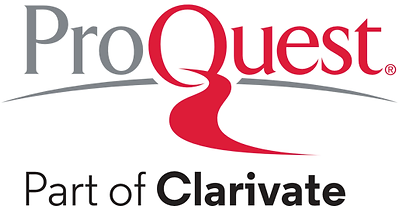Novel Model for Classifying the Toxicity of Metal Oxide Nanoparticles
| Authors | Harshal P. Varade1, Jaikumar M. Patil2, Bhagyashree Ashok Tingare3 , P. William4 , Vaibhav D. Dabhade5, R.A. Kapgate6 , Sachin K. Korde7 |
| Affiliations |
1Department of Mechanical Engineering, Sanjivani College of Engineering, Kopargaon, MH, India 2Department of Computer Science and Engineering, Shri Sant Gajanan Maharaj College of Engineering, Shegaon, SGBAU, Amravati, India 3Department of Artificial Intelligence and Data Science, D Y Patil College of Engineering, Akurdi, Pune, India 4Department of Information Technology, Sanjivani College of Engineering, Kopargaon, MH, India 5MET Institute of Engineering, Nashik, India 6Department of Mechatronics Engineering, Sanjivani College of Engineering, Kopargaon, MH, India 7Department of Information Technology, Pravara Rural Engineering College, SPPU, Pune, India |
| Е-mail | varadeharshalmech@sanjivani.org.in |
| Issue | Volume 17, Year 2025, Number 3 |
| Dates | Received 10 April 2025; revised manuscript received 21 June 2025; published online 27 June 2025 |
| Citation | Harshal P. Varade, Jaikumar M. Patil, et al., J. Nano- Electron. Phys. 17 No 3, 03024 (2025) |
| DOI | https://doi.org/10.21272/jnep.17(3).03024 |
| PACS Number(s) | 07.05.Mh, 77.84.Bw |
| Keywords | Metal oxide (4) , Nanoparticles (NPs), Toxicity, Non-toxicity, Machine learning (ML). |
| Annotation |
Metal oxide nanoparticles (MeOxNP) are receiving increasing attention in the last few years due to their various applications in electronics, medicine, and environmental remediation. However, their potential toxicity poses significant hurdles for safe usage. Therefore, this paper aims at developing a new artificial intelligence (AI)-based model for the efficient classification of the toxicity of MeOxNP using a Dynamic Pelican Optimizer finetuned Random Forest (DPO-RF) technique. A database has been prepared considering different types of nanoparticles (NPs) such as Al2O3, CuO, Fe2O3, TiO2, and ZnO, and the most important key physicochemical attributes. This model is followed by pre-processing using handling of missing values with imputation and performing standardization by applying the Z-score normalization. Features were extracted with principal component analysis (PCA) reducing dimension while keeping the vital information associated with toxicity in this model. The applied DPO-RF based model enhanced the feature selection of this model while achieving enhanced accuracy through adaptive exploration of this model. The results reflect the valid classification of MeOxNP either as toxic or non-toxic, which implies a total accuracy of about 98.2 % for classes of toxicity, and a corresponding accuracy rate of about 98.5 % for classes of nontoxicity, which is offering some important implications for the assessment of potential risks while using the respective nanotechnology application. |
|
List of References |
Other articles from this number
1) Electrical and Photoelectrical Properties of ZnFe2O4/InSe Heterojunctions [03001-1-03001-4]2) Design, Fabrication and Measurements of a Single-Layer X-Band Miniaturized Patch Antenna with Metasurface for 0.5U and 1U CubeSat Missions [03002-1-03002-10]
3) Microstructure and Morphological Properties of Granulated Mg3Sb2 Thermoelectric Material [03003-1-03003-7]
4) Green Synthesis of ZnO Nanoparticles Using Leaf Extracts, their Characterization and Antimicrobial Applications [03004-1-03004-10]
5) Design and Performance Improvement of a 3.5 GHz Elliptical Patch Antennafor 5G Sub-6 GHz/WiMAX Applications [03005-1-03005-6]
6) Ellipsometric and Maxwell-Garnett Model Studies of Silicon Nitride-based Bilayer Structures Elaborated by LPCVD [03006-1-03006-5]
7) Design, Fabrication and Measurements of an X-Band Cross-Patch Antenna with Metasurface for Advanced LEO CubeSat Missions [03007-1-03007-12]
8) Nanotechnology Driven Advanced Imaging and Classification of Brain Tumours [03008-1-03008-5]
9) Compact Semicircle CSRR- Loaded Antenna for Triband Applications [03009-1-03009-5]
10) Analysis of Performance Parameter of Hexagonal Coil Structure for Wireless Power Charging in Electric Vehicle [03010-1-03010-5]
11) Design and Analysis of a Notched Super Wide Band Antenna for Wireless Communication [03011-1-03011-5]
12) Reduction of Common-Mode Voltage Using Novel T-Type Multilevel Inverter for EV Application [03012-1-03012-5]
13) A Meta Surface Based Patch Antenna for Wireless Space Craft 5G Communication Systems [03013-1-03013-5]
14) Graphene Nanoribbon Based Asymmetric Tunnel FET for Fast Switching and Low Power Applications [03014-1-03014-5]
15) Massive MIMO Signal Detection Using Cascaded OQRD-PMD Method [03015-1-03015-6]
16) Design of a Compact Vivaldi Antenna for Wearable Tactical Applications [03016-1-03016-4]
17) Low-Profile Tapered Slot Antenna for Wearable Military Applications [03017-1-03017-4]
18) Optimized Dual Coupling PIFA for Low SAR Smartphone and Wearable Applications [03018-1-03018-4]
19) Design of Efficient Miniaturized Printed Monopole Antenna for Short-Range Wireless Applications [03019-1-03019-5]
20) Quantum Computing Approaches to Autonomous Mobile Robots and Multi-Machine Systems: A Perspective on Design Automation [03020-1-03020-6]
21) A Circular CPW Fed Patch Antenna with an L-Shape and Two Semi-Circular Shaped Slots for L, Ku and K-Bands [03021-1-03021-4]
22) DFT Performance Analysis of Graphene Nanoribbon FET with Gate Stack for Low Power Applications [03022-1-03022-5]
23) Forecasting Dielectric Behavior of Nano-Epoxy Materials through AI-based Electronic Properties [03023-1-03023-5]
24) Dynamics and Optimization of Physical Processes in Information Systems Using Autonomous Mobile Robots and Multi-Agent Systems [03025-1-03025-6]
25) Automated Classification of Carbon Nanomaterial Structures based on Computer Vision Model [03026-1-03026-6]
26) Dynamic Optimization of Non-Equilibrium Processes in Nanostructures for High-Performance Applications [03027-1-03027-5]
27) Radiation-Induced Processes in Commercially Available Samples of Activated Carbon Under the Influence of Gamma- and Beta-Radioactivity [03028-1-03028-8]
28) Enhancing Concentrated Solar Photovoltaic (CSPV) Efficiency through Co-Doped ZnO Window Layers and Bi-As Infused GaSb Substrates [03029-1-03029-9]
29) Theoretical and Experimental Study of a Human Inner Ear Implant with an Ultrasonic Communication Line [03030-1-03030-7]
30) Thermoresistive Properties of Graphite Films [03031-1-03031-4]
31) Percolation Behavior of Electrical Conductivity of Polylactic Acid-Based Nanocomposites [03032-1-03032-6]
32) Structural and Optical Properties of Polystyrene CdS Nanocomposite Prepared by a Soft Chemistry Method [03033-1-03033-5]
33) Influence of Pulsed Current Parameters on the Structure Formation of Amorphous Co-W Alloys and their Thermal Stability [03034-1-03034-5]
34) First-Principles Calculation Investigations of Bandgap Bowing Parameters, Electronic and Optical Properties of Cd1 – xZnxTe, Cd1 – xZnxSe and Cd1 – xZnxS Semiconductors Alloys [03035-1-03035-7]
35) Reconfigurable Truncated E-Shape Electromagnetic Gap-Coupled Antenna with Air Gap and Switch Configurations for Wideband Wireless Applications [03036-1-03036-6]
36) Recovering Data for Free Induction Decay Signal for MRI Reconstruction with Interpolation [03037-1-03037-6]
37) Novel Hybrid Approaches for Occupancy Prediction Using Temperature, Light and CO2 Level Supporting Electrical Energy Management [03038-1-03038-6]






